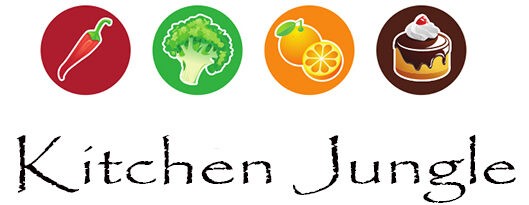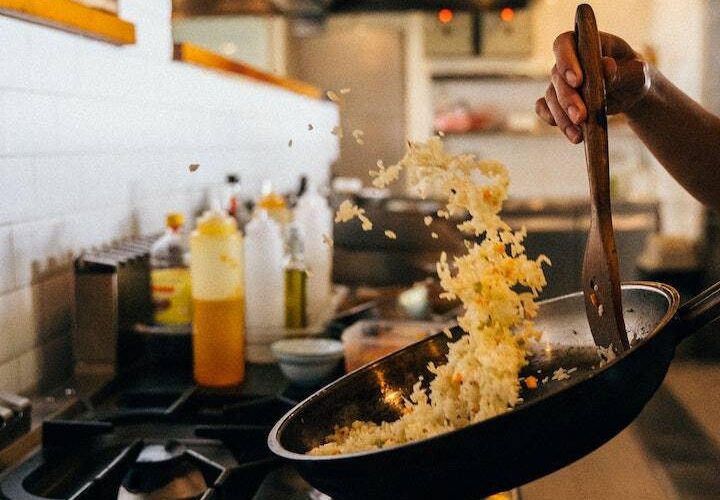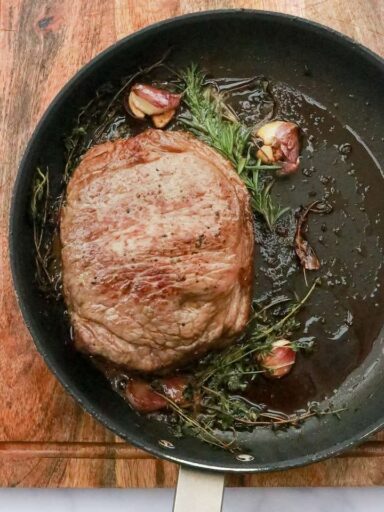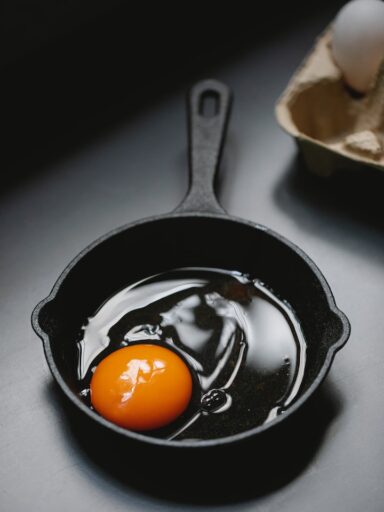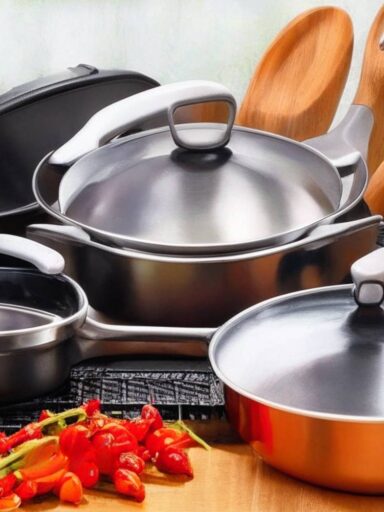Cooking is an art and science, and the right tools can make a significant difference in the outcome of any dish. Large pans are an essential tool in any kitchen, offering ample space to cook large quantities of food at once. Whether you’re preparing a meal for your family or cooking for a big group of people, having a large pan can make your life easier and more efficient.
The Importance of Large Pans in Cooking
Large pans are essential in many cooking scenarios where other pots or pans may not be big enough. For instance, when cooking pasta dishes that require boiling water or frying several pieces of chicken or fish simultaneously, only a large pan can accommodate such needs. Furthermore, using multiple smaller pans to cook one dish often creates an unnecessary mess and takes longer than using one larger pan.
Another reason why large pans are important is that they help distribute heat evenly across the ingredients being cooked. When food is overcrowded in a small pot or pan, some parts tend to cook faster than others leading to unevenly cooked dishes which can ruin their overall taste.
Overview of Different Types of Large Pans Available in the Market
When it comes to large pans for cooking, various types exist on the market today. Skillets are commonly used as they come with handles on either side making them easy to move from stove-top to oven if necessary. Additionally, most skillets come equipped with lids that help maintain heat inside ensuring that meals stay warm while serving.
Woks are another popular type of large pan used mostly for stir-frying foods. They have high sides which prevent food from spilling over and offer ample space making it easy when tossing vegetables around inside them when cooking various dishes.
Roasting pans offer yet another option for those looking for larger cookware options as well as the ability to roast meats such as turkey or chicken. They come in various sizes and materials and often include a rack for holding the meat off the bottom of the pan to prevent it from burning.
Large pans are an essential tool in any kitchen as they provide ample space, and distribute heat evenly across ingredients being cooked while also offering versatility in cooking various dishes. With so many options available on the market today, selecting the right pan should be based on needs such as size, material type, and use scenario.
Types of Large Pans for Cooking
Skillets: Versatile and Reliable
Skillets are an essential tool in any kitchen. These large pans are perfect for cooking meals that require high heat and plenty of surface area.
Skillets come in different sizes, with the most common being 10, 12, and 14 inches. The larger the skillet, the more food you can cook at once.
Skillets are versatile and can be used on any stovetop (gas, electric, or induction). They come in different materials such as cast iron, stainless steel, aluminum, or copper.
Cast iron skillets have been around for centuries and are known for their durability and even heat distribution. Stainless steel skillets offer a sleek look and are easy to clean.
Aluminum or copper skillets heat up quickly but can be more expensive. These pans can be used for a variety of dishes such as sautéing vegetables or meat, frying eggs or pancakes and even baking desserts like skillet cookies or brownies.
Woks: Perfect Heat Distribution for Stir-Frying
Woks originated in China but have become popular worldwide due to their unique shape that allows food to cook quickly and evenly. These large pans feature a rounded bottom that distributes heat more evenly compared to traditional flat-bottomed pans. Woks come in different sizes but the most common ones measure between 12-14 inches in diameter with a depth of 4-5 inches.
They can be made from carbon steel which is a durable yet lightweight material that heats up quickly. Woks are versatile tools used primarily for stir-frying but can also be used for steaming vegetables, deep-frying crispy dishes like tempura shrimp or chicken wings, and even boiling noodles.
Roasting Pans: Perfect For Slow Cooking Large Meals
Roasting pans are large pans that are used for cooking meat or poultry in the oven. These pans come in different sizes and materials, but most commonly measure between 12-16 inches in diameter.
They can be made from stainless steel, aluminum, or cast iron. Roasting pans usually have high sides and a rack that lifts the meat off the bottom of the pan to allow for even cooking and to prevent it from sitting in its juices.
This method of cooking is called roasting, which involves cooking food slowly at a low temperature. Roasting pans are perfect for preparing large meals like Thanksgiving turkey, ham, or prime rib roast.
They can also be used for roasting vegetables like potatoes or yams. Overall, whether you need a skillet for breakfast omelets, or wok for quick stir-fries, or a roasting pan to host family events using a high-quality large pan will make food preparation and entertaining much easier and enjoyable.
Factors to Consider When Choosing a Large Pan for Cooking
Size and capacity
When choosing a large pan for cooking, the size and capacity are crucial factors. You should consider the amount of food you intend to cook and the number of people you will be serving.
A pan that can cook enough food for a family of four may not be sufficient if you’re hosting a dinner party. Additionally, ensure that the pan fits comfortably on your stove or burner.
Material
The material used to make the pan influences its performance, durability, and maintenance needs. Stainless steel is durable, resists corrosion, holds heat well, and is easy to clean.
Cast iron pans are also highly durable and retain heat well but need seasoning to prevent rusting. Aluminum pans are lightweight but prone to scratching easily.
Shape and design
The shape and design of a large pan can significantly affect its functionality. For instance, a straight-sided skillet may not be suitable for high-heat cooking techniques such as stir-frying as it doesn’t allow for easy tossing or flipping of ingredients. On the other hand, sloped-sided skillets allow for better movement of ingredients during cooking.
Handle type
Large pans typically have two types of handles – long handles or side handles. Long handles provide better balance when lifting heavy foods or liquids while side handles offer better control when swirling or tossing food in the pan.
Tips on Using Large Pans for Cooking
Preheating the pan before cooking
Before using your large pan for cooking, it’s essential to preheat it first thoroughly. This helps distribute heat evenly across its surface area leading to better-cooked meals with fewer hotspots.
Properly seasoning the pan before use
If you’re using cast iron pans, proper seasoning is crucial to prevent rusting, sticking, and corrosion. Seasoning involves applying a thin layer of oil on the surface of the pan and baking it in the oven.
Avoiding overcrowding the pan while cooking
Overcrowding your pan can lead to uneven cooking or steaming rather than browning. Ensure that there’s enough space between ingredients to allow for the circulation of air and heat.
Maintenance and Care for Large Pans for Cooking
Cleaning tips based on material type
Different materials require different cleaning methods. For instance, cast iron pans should not be washed with soap but instead scrubbed with hot water and a brush to maintain their seasoning. Non-stick pans also require special care when cleaning as metal utensils can scratch their surfaces.
Storage recommendations
It’s essential to store your large pans correctly to prevent damage. Stackable pans should be separated by dish towels or paper towels while hanging pots and pans racks free up cabinet space.
Conclusion
Choosing the right large pan for cooking can make all the difference in how well your meals turn out. Size and capacity, material type, shape, design, and handle type all play integral roles in selecting the best pot or pan option suitable for your needs.
Proper maintenance such as preheating before use, seasoning cast iron options prior to first-time use, and avoiding overcrowding when cooking meals are key tips that ensure good performance over time. Being mindful of how different materials require specific cleaning methods aids in keeping these kitchen staples looking like new even after prolonged usage!
